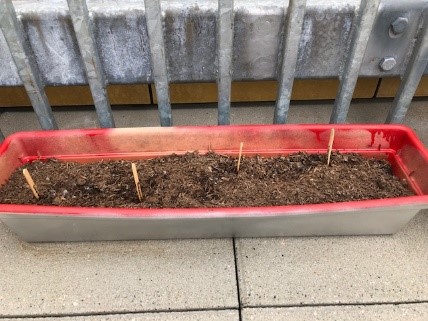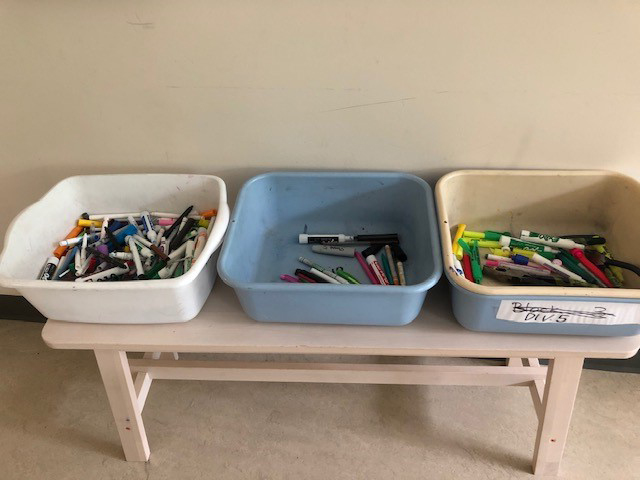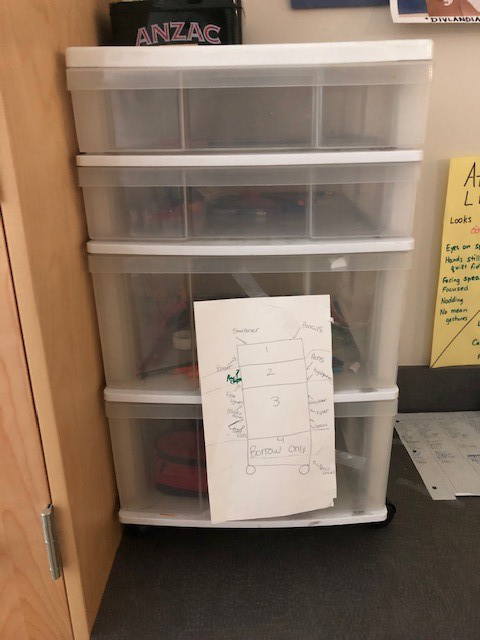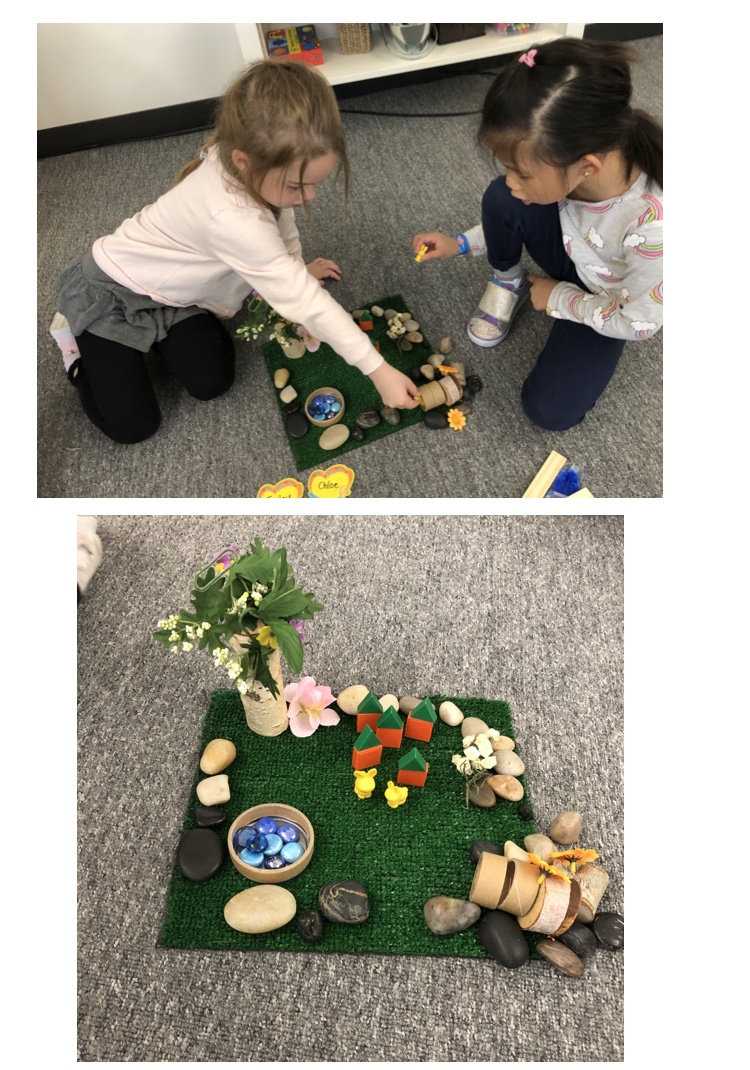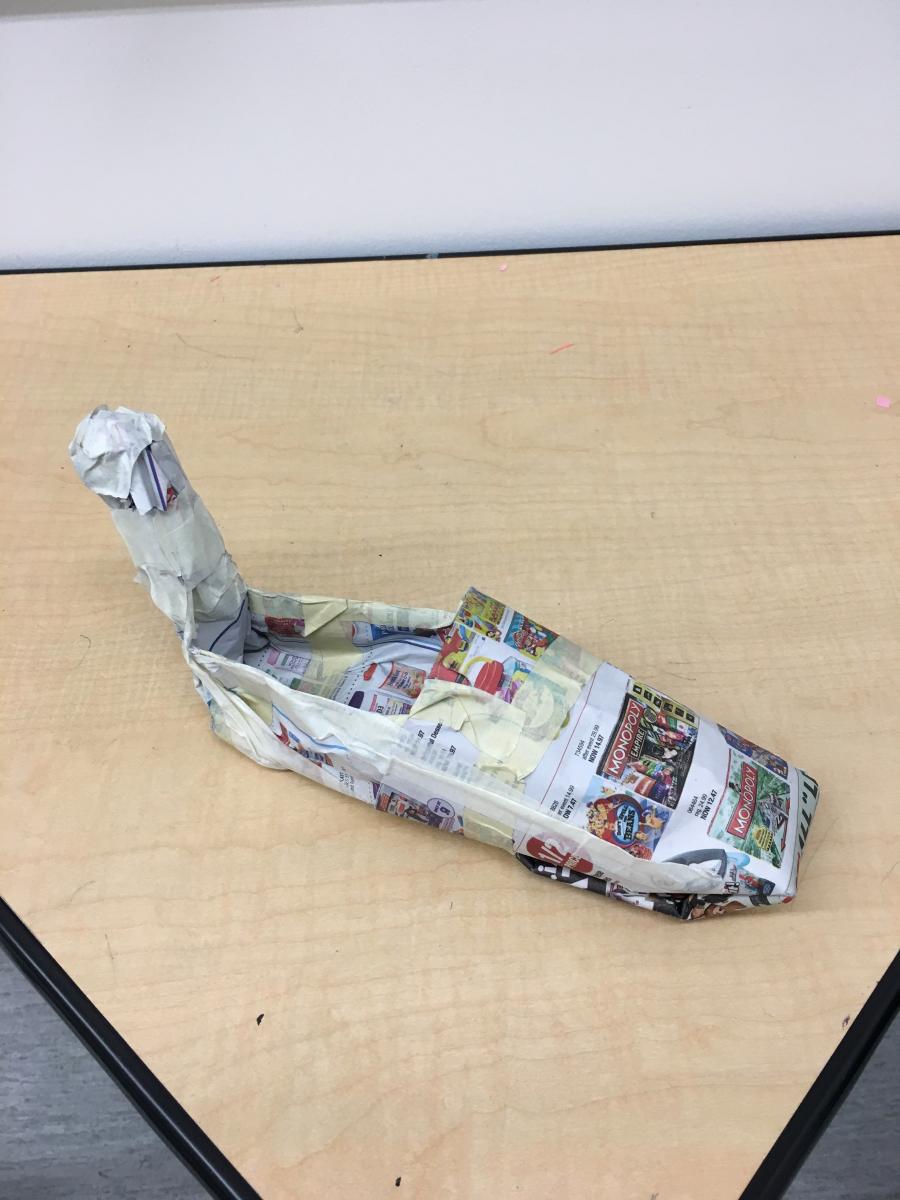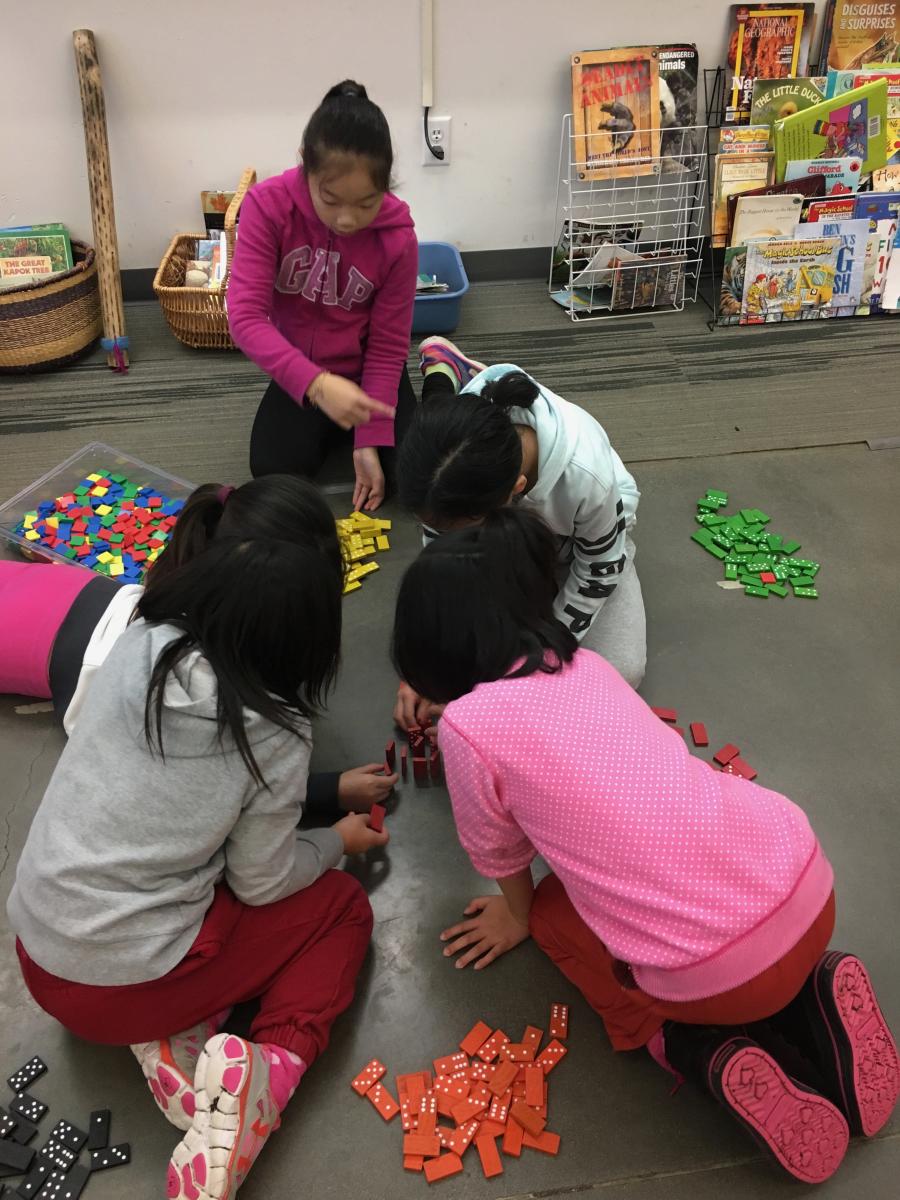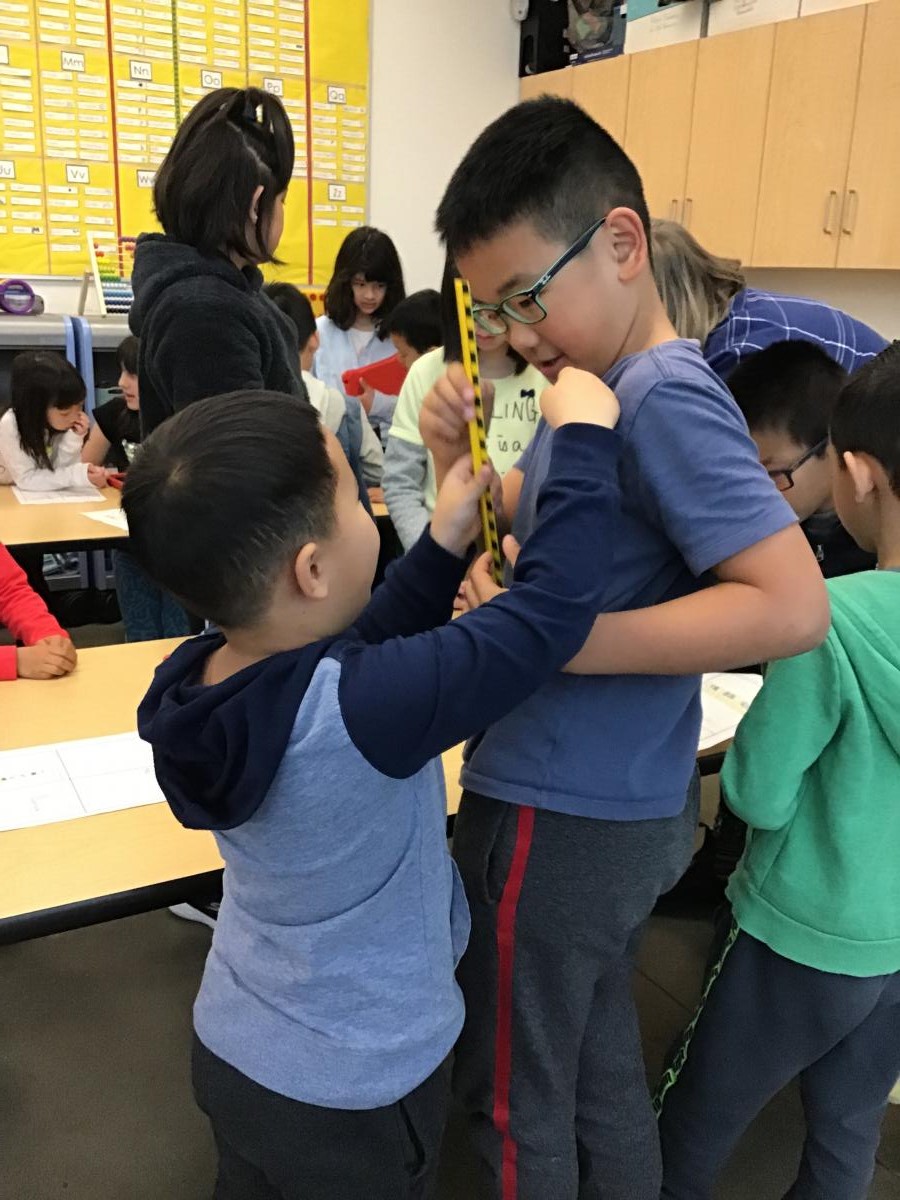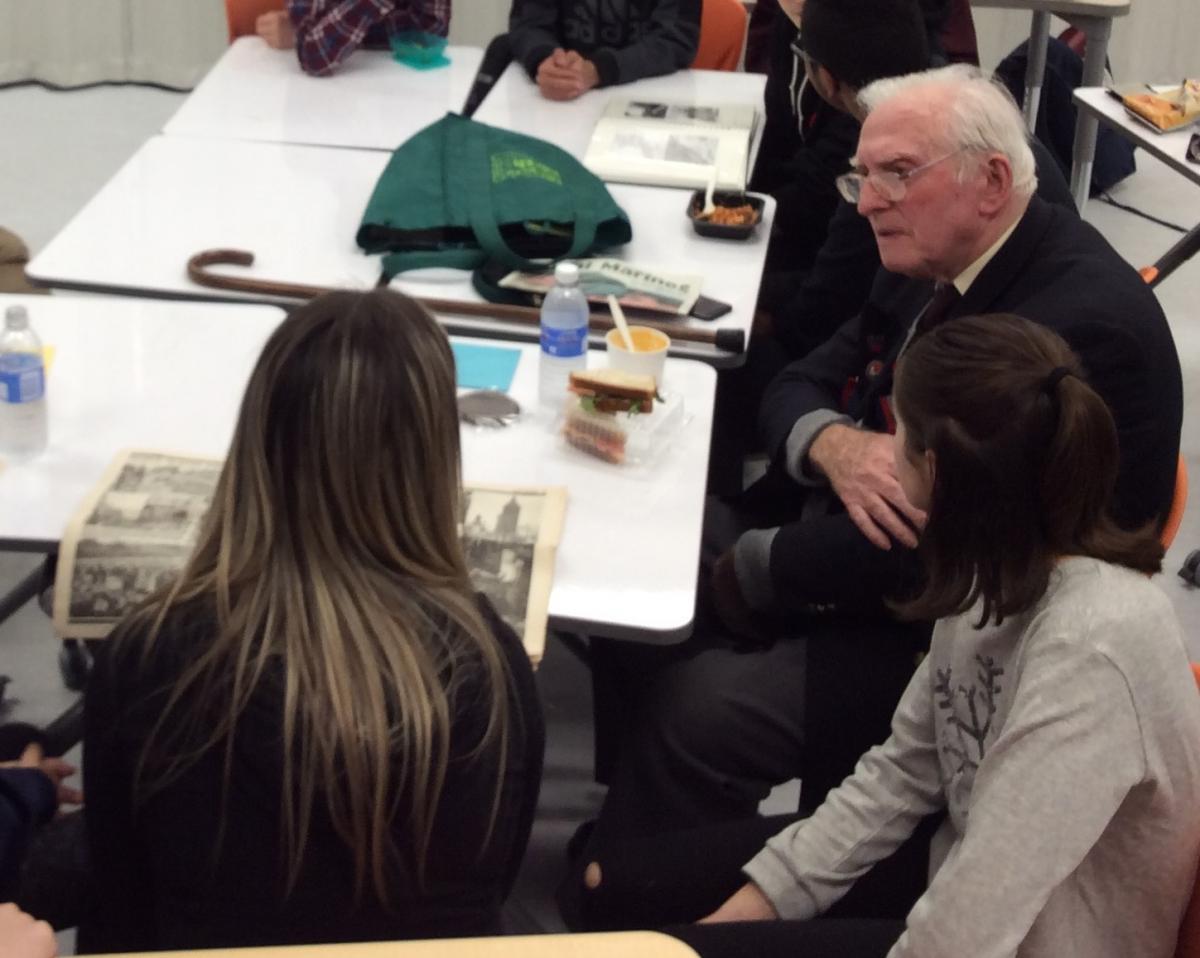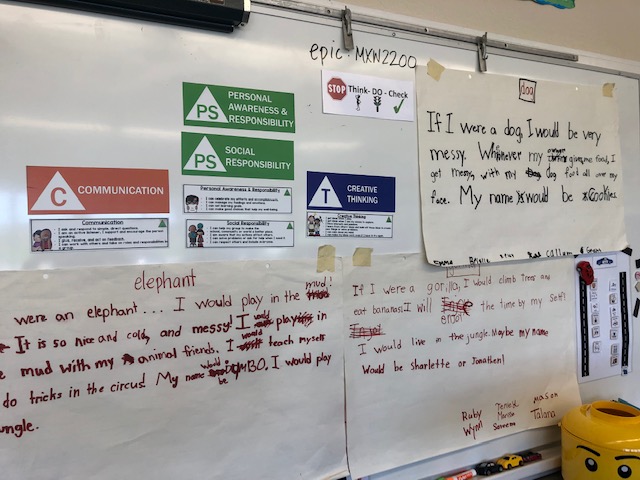Illustration Elements
Illustration Éléments
Context
The Teacher’s Voice
Our class was part of a WE Wellbeing Pilot Program focused on service learning. The program encourages students to set goals (what you want to accomplish) and have intentions (how you want to be/feel while working towards your goal). When we discussed what our project might be, students felt strongly about doing something for the environment to address climate change. They worked collaboratively to set the goals and intentions of their project, then organized themselves into four groups to execute their plans:
- Gardening group
- Recycling group
- Energy management group
- Swap cart group.
I provided minimal teacher support was minimal because students had a strong sense of purpose and agency. Afterwards, students self-assessed their core competencies and reflected on their work.
Illustration
Student Work Samples: Goals and intentions
Garden Group
- Goals: To help the environment by planning vegetables and fruits; To raise awareness
- Intention: Have fun!
Recycle Group
-
Goal: To increase awareness about plastic
- Intention: To share knowledge
Energy Management Group
- Goal: To reduce energy use
- Intention: To share knowledge
Student Reflection
Goals of our class project
- Increase awareness
Intention of our class project
- Gratitude
Goals of your group’s project
- To collect 20 pens, get the ink sponge out, and recycle them.
- To raise awareness about the plastic usage in our environment.
My personal intention (how I would like to approach this activity)
- I would like to approach this in a responsible way and a mature way.
Self-Assessment
My strength is giving and adding onto other people’s ideas. One example is one day my group was trying to find a way to find out how we were going to recycle and I said, One day we get pens and markers, then other days we take the ink out of them, and repeat. I can get better at keeping my group on task. To do this I need to stay more focussed.
I can facilitate group processes and encourage collective responsibility for our progress.
I play a role in collectively monitoring the progress of the group and adjust my contributions as needed. I recognize the interdependence of our roles and draw on these to move us forward. I ask thought-provoking questions, integrate new information and various perspectives from others, and think critically about whose voices are missing. I can disagree respectfully, anticipate potential conflicts and help manage them when they arise. I give, receive, and act on constructive feedback in support of our goals, and can evaluate and revise plans with other group members.
I can make choices that help me meet my wants and needs and increase my feelings of well-being. I take responsibility for my actions.
I can take action toward meeting my own wants and needs and finding joy and satisfaction, and work towards a goal or solving a problem. I can use strategies that increase my feeling of well-being and help me manage my feelings and emotions. I can connect my actions with both positive and negative consequences and try to make adjustment; I accept feedback. I make decisions about my activities and take some responsibility for my physical and emotional well-being.
I can take purposeful action to support others and the environment.
I can build relationships and be a thoughtful and supportive friend. I demonstrate respectful and inclusive behaviour in a variety of settings; I recognize that everyone has something to offer.
